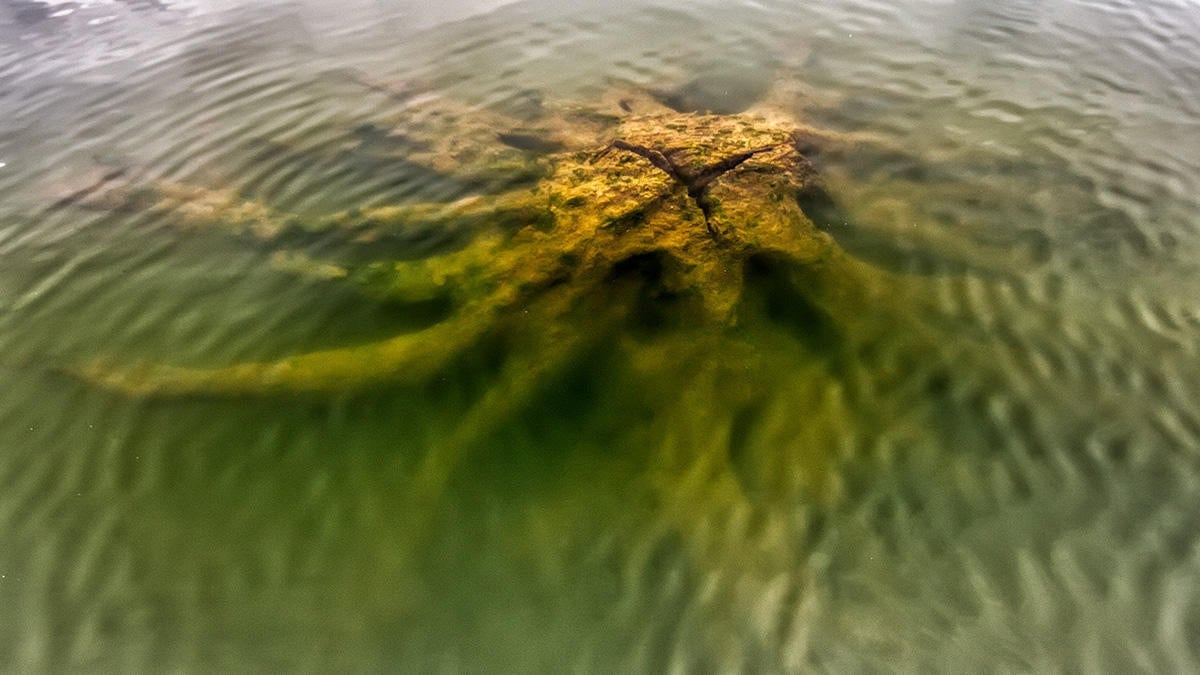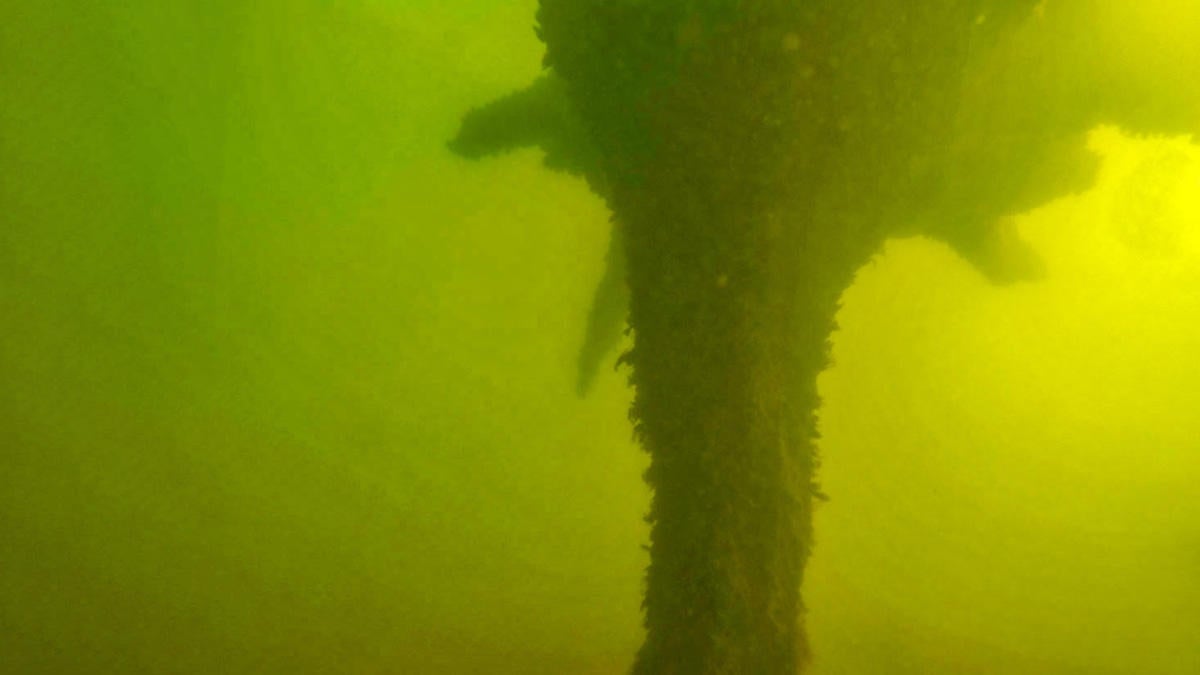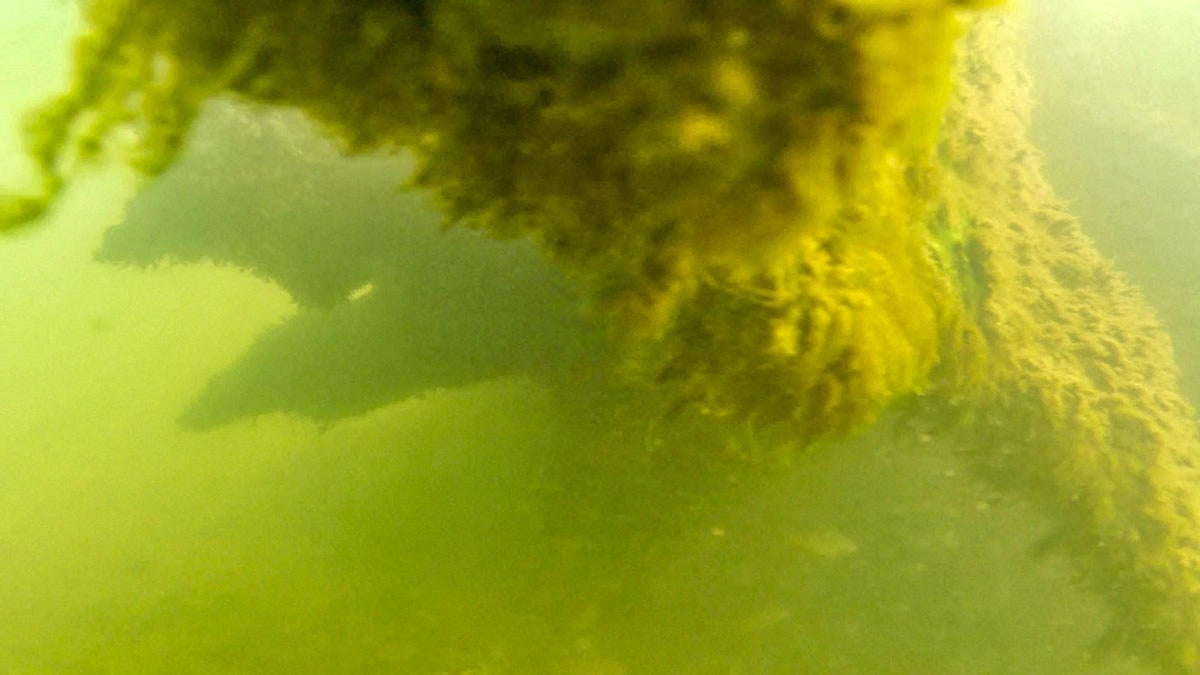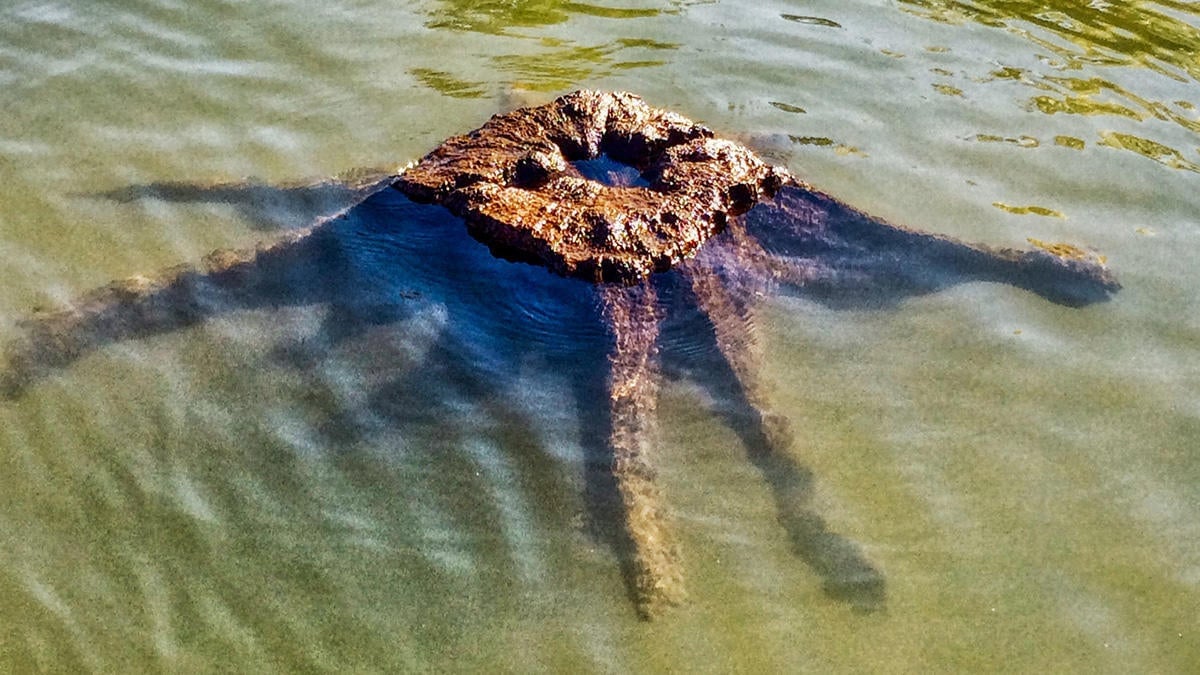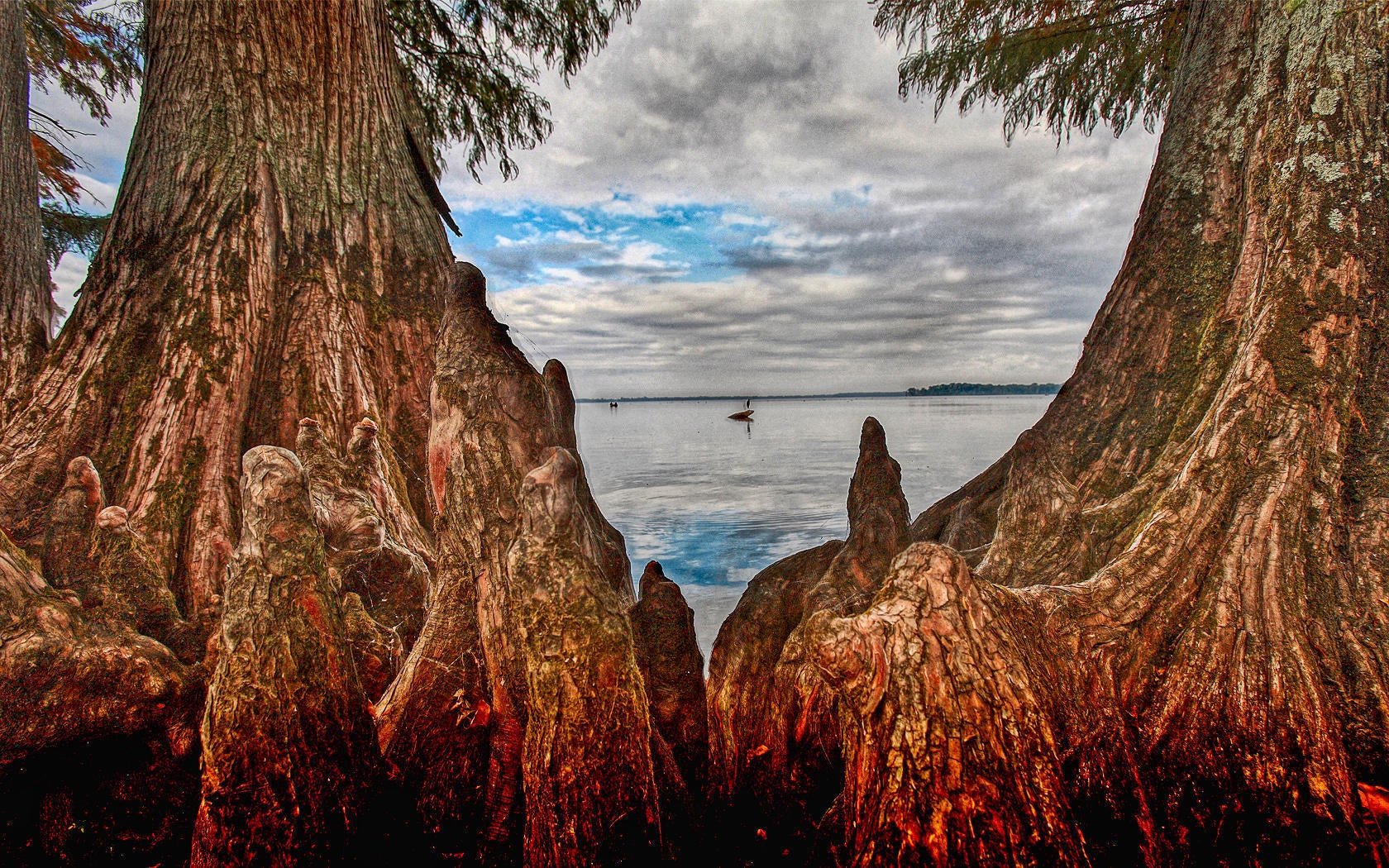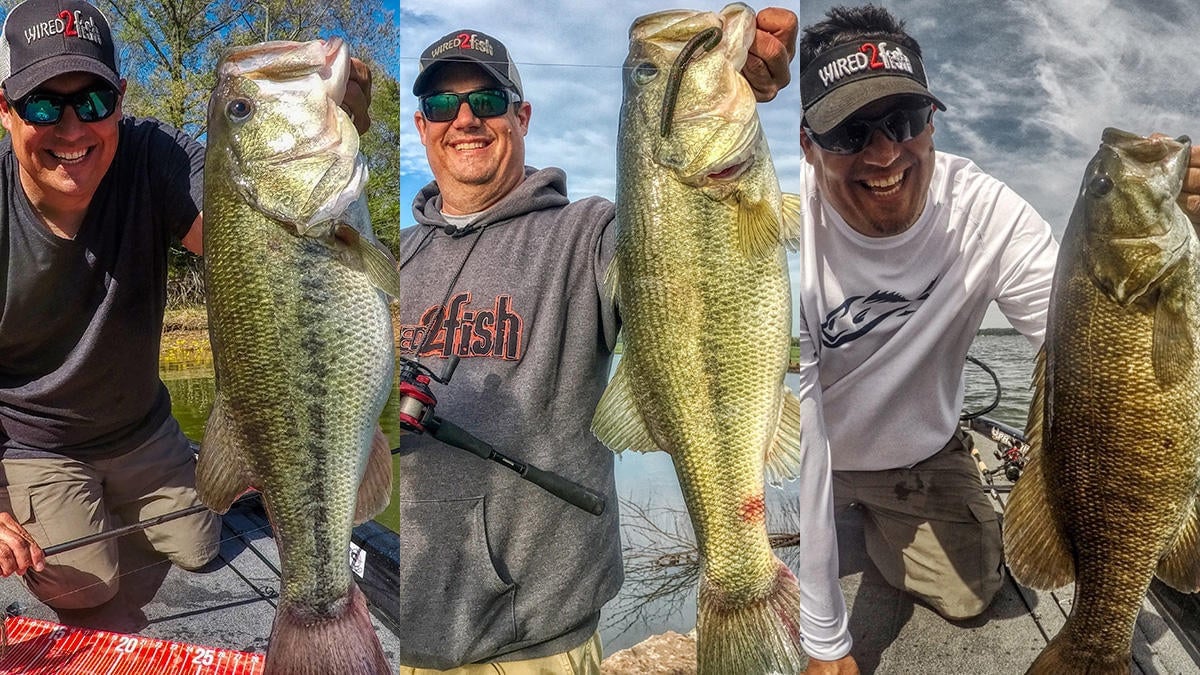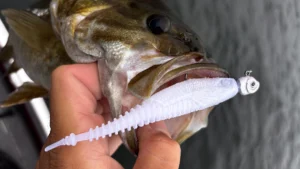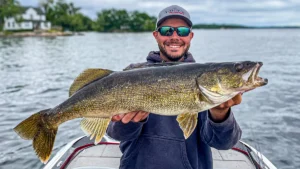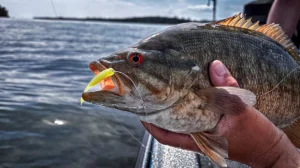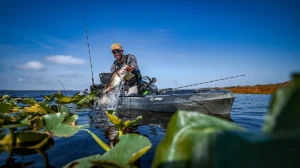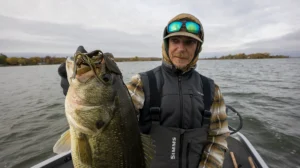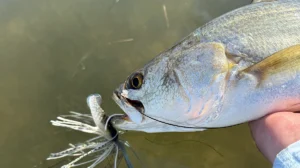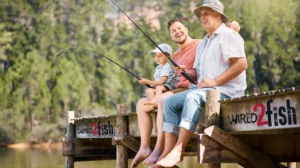Stumps are among my favorite pieces of cover for bass fishing. They provide excellent cover and ambush opportunities for big bass, and one large stump can hold several good fish. However, many anglers might not fully understand what they’re targeting when fishing stumps throughout the year.
Stumps can host their own underwater ecosystem. They often serve as spawning sites for panfish and attract baitfish like shad, which use them for shade and spawn around full moons. With their combination of protection, food, shade, and opportunities, stumps are a crucial spot to fish in any body of water.
I put a camera under the water to look under some productive stumps this past year where I’ve caught good fish over the years. And a few things occurred to me about fishing stumps upon doing that.
There are things you learn about fishing cover over the years that doesn’t always make sense until you change your perspective. I learned a lot about flipping bushes by flying a drone over productive stretches and looking at the layout of bushes from above. I learned a lot about fishing stumps, likewise, by sticking a camera under them, so I thought I would share.
TABLE TOP STUMPS
I was very surprised to find that a lot of stumps have a single post under them supporting the bulk of the head of the stump that you see above the water. I guess over the years, the top soil erodes away. That exposes the branches of roots you see from the big elaborate river stumps on reservoirs like Kentucky Lake. But as time passes on, the tips of the roots rot back towards the stump. The thickest root I’m guessing is usually at the core of the stump, so it’s the last to rot.
My house has a round dining room table with a single center column. My dog constantly hides under there when a stranger comes in the house. Most of the time you can’t even see the dog under there and she can’t see you.
I realized the same thing was going on fishing these stumps. I would throw over a stump six times with a topwater and all the sudden on the seventh cast, a big bass would kill my bait. Where was he that whole time? My guess is on those table top stumps, they suspend right under them as that would be the deepest darkest shade. So it probably takes a handful of casts to coax it out where it can see bait coming from a distance.
GARAGE STUMPS
I’ve seen a handful of stumps that have a nook carved out on the side almost like a carport. I have seen on lakes like Smith Lake, big bass will actually back themselves into that carport facing out of the stump. You don’t see them until the last second when they swim out of that little cubby you thought was too shallow to be holding a bass.
I’ve learned to make a cast to the darkest side of the stump long before I get close to it. I’ve done that a bunch with weightless Yamamoto Senkos, YUM Dingers and Z-Man TRDs on a Ned Head to catch fish backed into those stumps.
BASKET STUMPS
I think sometimes we over estimate a bass’s ability to bead in on a bait in cover. I’ve found in the more sprawling stumps, a bunch of presentations are often necessary to get to the fish’s attention as he is probably moving around through the weave of roots below or just not able to see the bait in the maze.
I’ve had fish follow a bait out of a stump on one side then peel off and go right back into the stump. Then I turn and pitch back in and catch it on the other side. I think the way bait moves around in those sprawling roots, they are often chasing one off here and there and don’t know any better in those elaborate root systems.
A jig is good as is a spinnerbait where you can attack the stump from different angles quickly and repeatedly.
DOUBLE TAKES
This is an odd one to me, but it’s uncanny how frequent I find the same outcome. I have a handful of double isolated stumps on lakes I fish. It’s really uncanny how many big fish I have caught in those places where two stumps are together but isolated from any other cover in the area.
I’ve also found you catch fish loose on those stumps where there are two together like that with some space between them. It makes me wonder if they don’t have a feeding ground established between the stumps and they just meander back and forth through them instead of just burying up in one.
So I fish the whole area around the two stumps when I find them like that. I catch a lot on these double stumps with topwaters like Zara Spooks and Whopper Ploppers.
BEES KNEES
With cypress trees, they can have large root systems and knots and knees several feet away from the base of the stump that the bass will often suspend or lay in. I think they are almost like natural stake beds for bass. They lay in the knees looking back at the stump or tree and ambush from the outside in. You can get multiple fish a lot of times when you find these knee systems around the base of cypress trees or newer cypress stumps. While it’s not always a stump you are fishing, the knees themselves are setup a lot like a bunch of mini-stumps.
Seeing bait moving around under the stumps, seeing how the stumps can canopy the fish from what’s above them, seeing how elaborate the root systems can be on a stump when the water is low, it changed my thought process for fishing around stumps.
It’s not one throw at the stump and move on to the next one. It’s a series of presentations. It’s covering it from many angles, not knowing which way a bass might be facing and knowing I might have to coax him out from under it a bit before he will commit to a lure. That thought process has led to a lot more catches for me over the years.
GET TO KNOW YOUR STUMPS
I had made a lot of these changes to my presentations through experience already, but now that I’ve looked under there, it has gave me a batter understanding of why I needed to make those changes and why they have led to more catches.
I catch fish in the spring on stumps where bass might spawn casting plastics like Senkos. I catch fish off stumps in the summer where bass chase swimbaits and big worms and jigs. I catch bass off stumps in the fall working topwaters and spinnerbaits around them. I catch bass off stumps in the winter with crankbaits, jerkbaits, swimbaits and Alabama rigs. And a jig is good all year.
Stumps can fish well at various times of the year. Finding them in different parts of the lake like on main river flats, back in protected pockets, on points and along creek channels can all lead to good bass catches around stumps all year long.
